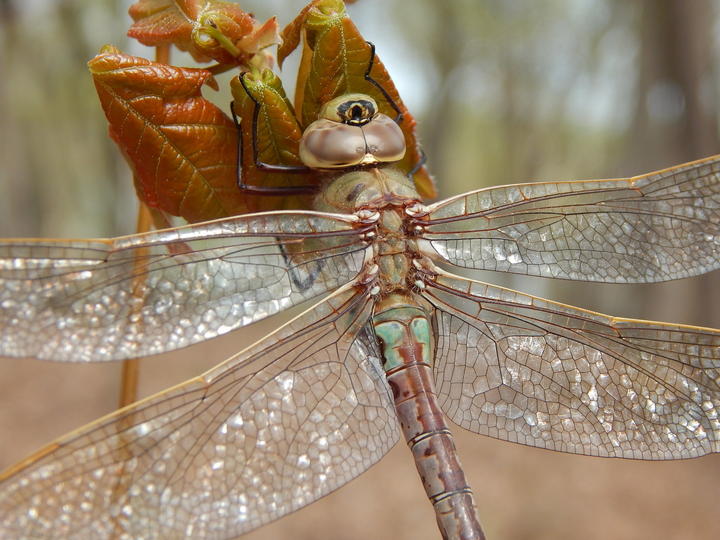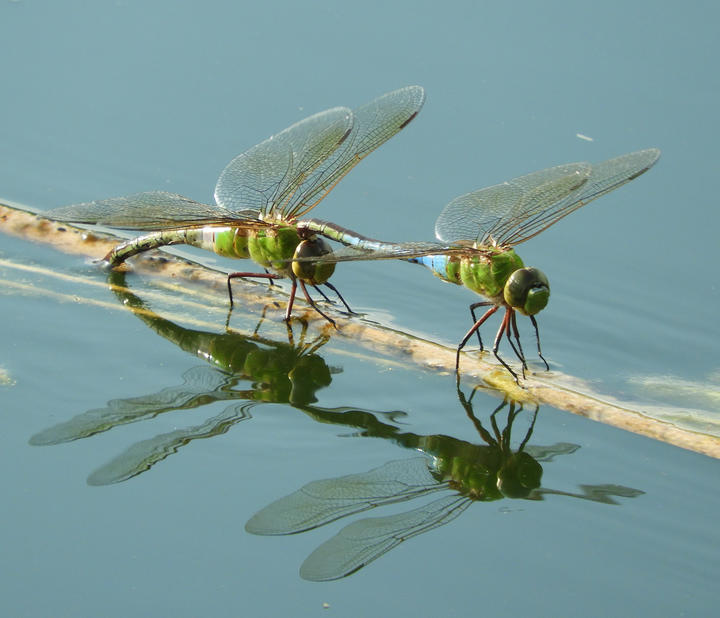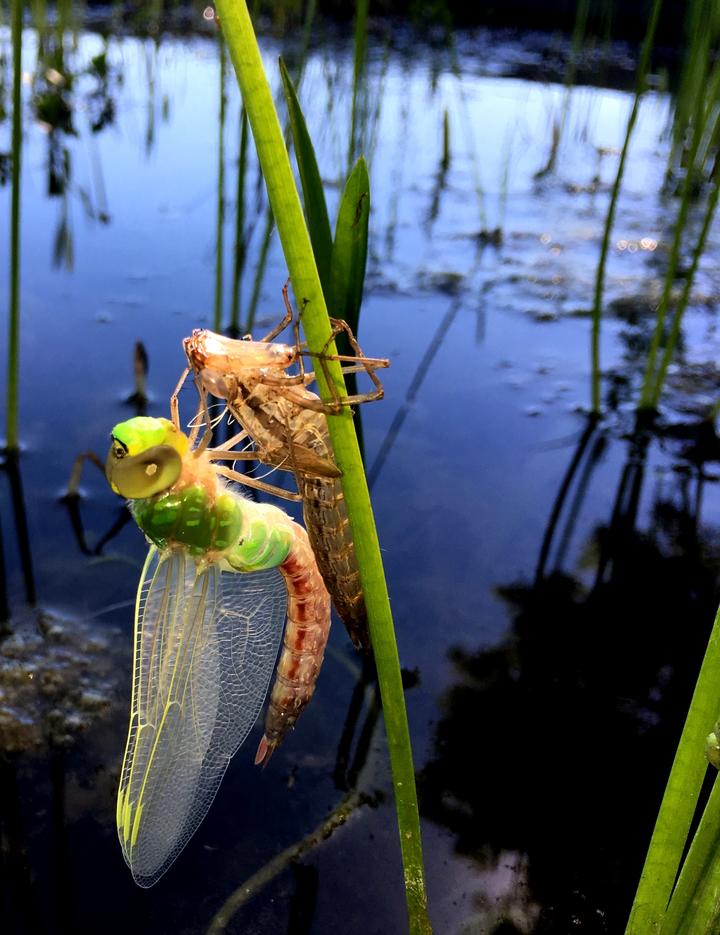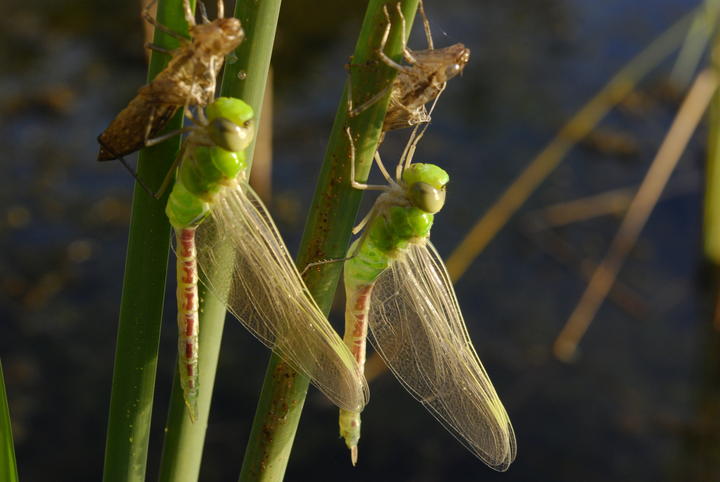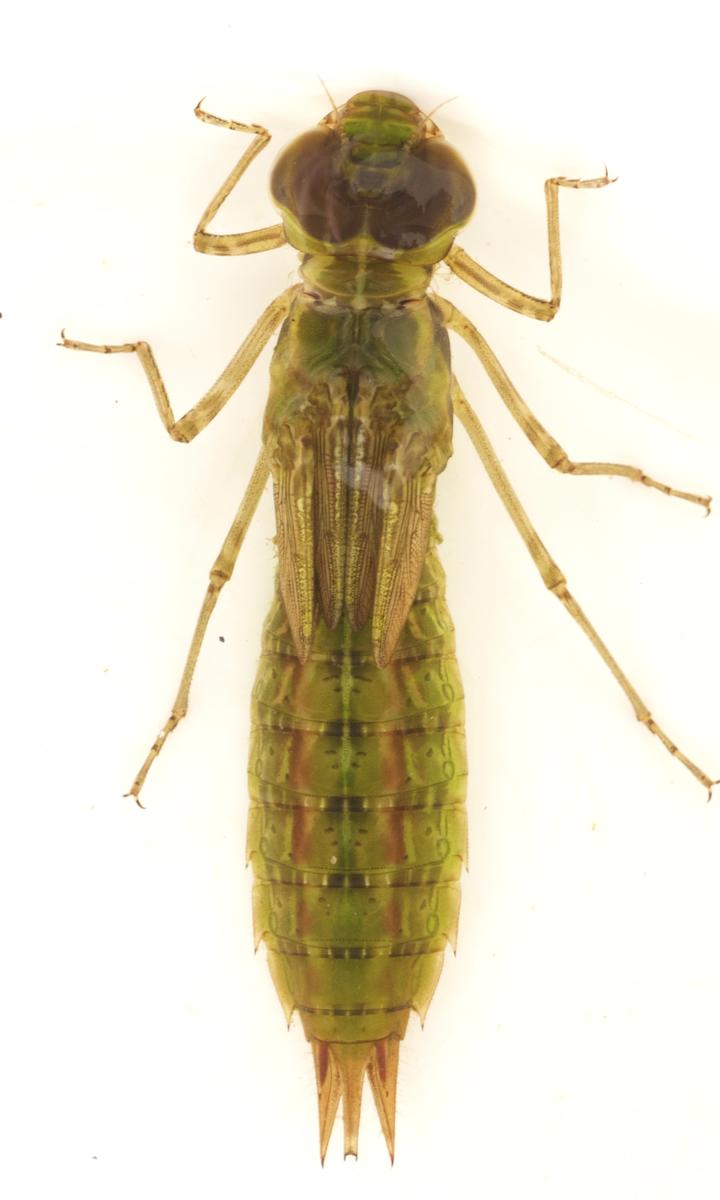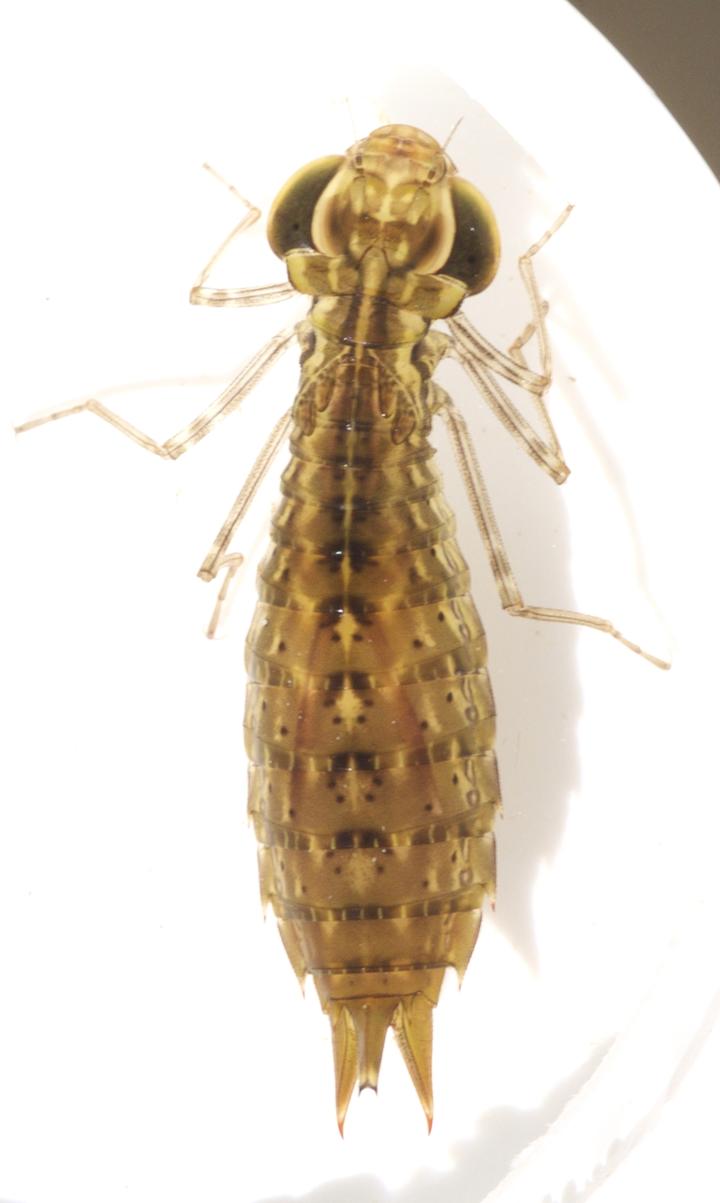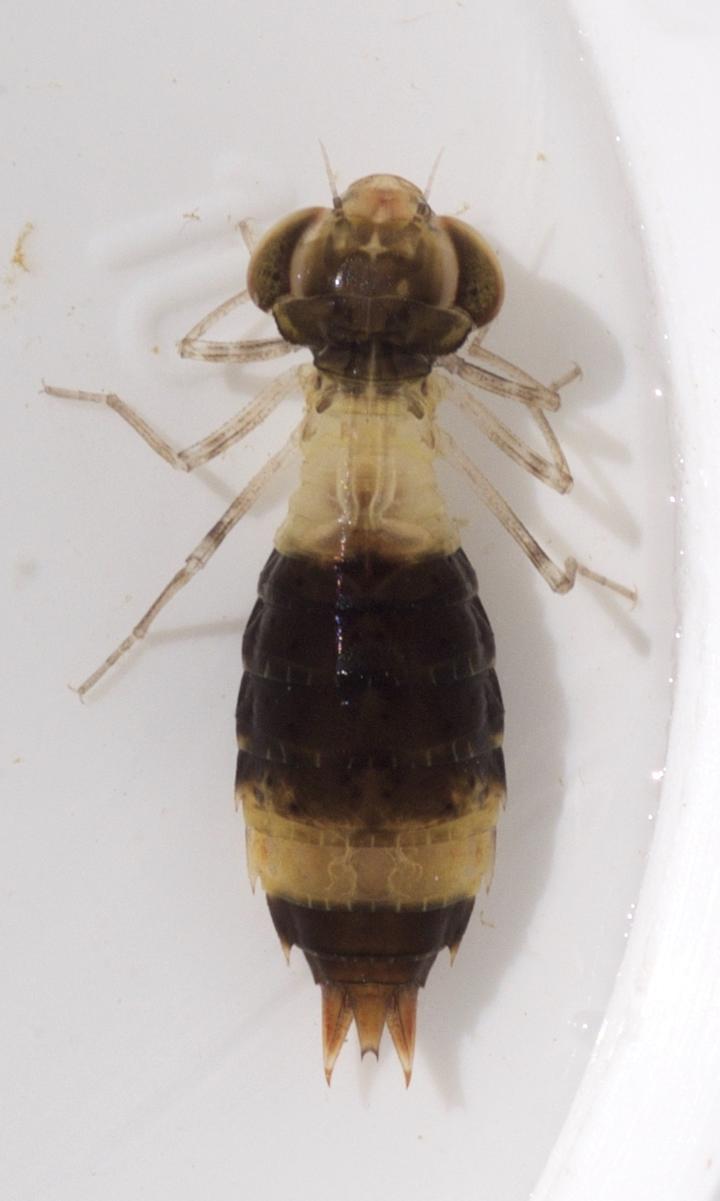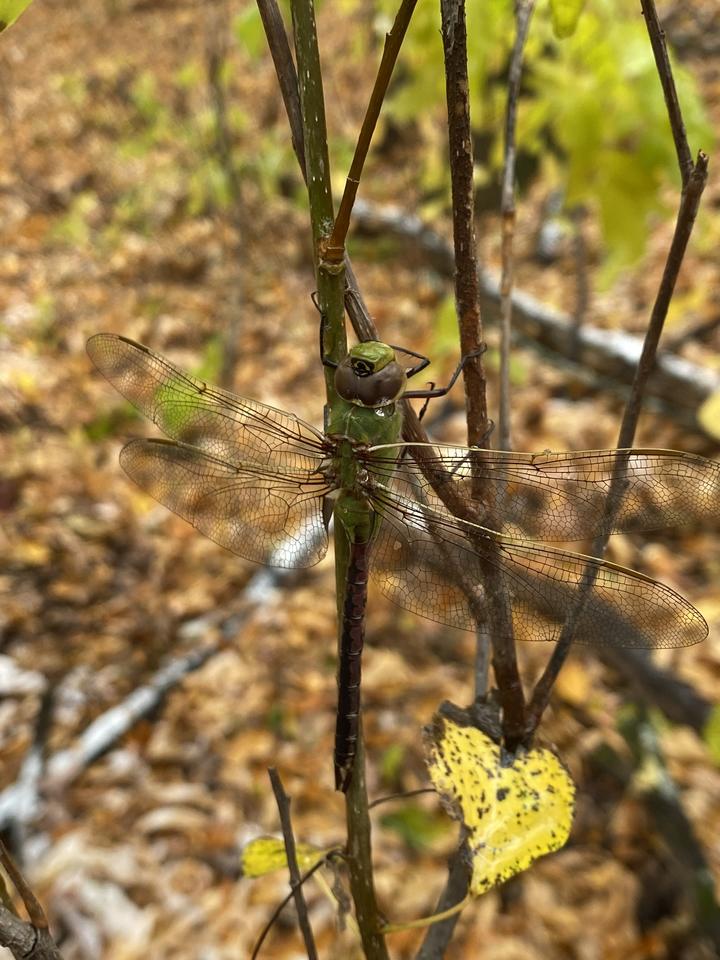More names for this insect
Anishinaabemowin: Oboodashkwaanishiinh (dragonfly or damselfly)
Dakota: Susbeça (dragonfly)
The Dakota and Anishinaabe were among the earliest people to name Minnesota’s plants and animals, as well as to understand them in relation to Minnesota’s climate and seasons. Those original names are still in use, and several are included on the Season Watch website.
Latin (or scientific name): Anax junius
The scientific community has a convention of assigning agreed-upon Latin names to every kind of organism. Using scientific names helps people communicate confidently about the same organism and organize lifeforms based on how closely related they are.
More common names: Horse stingers
Page contents
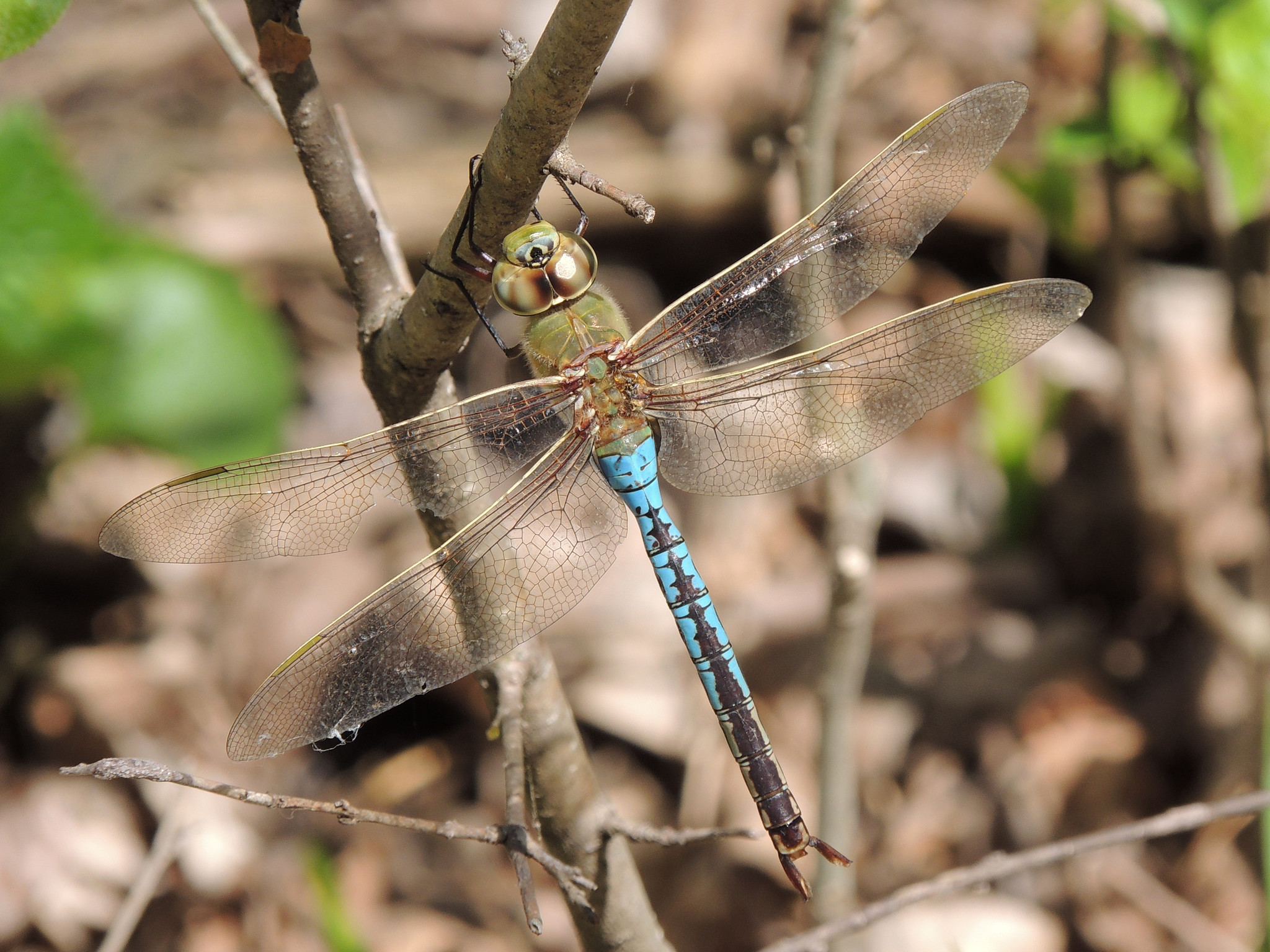
April 30, 2015, Freeborn County, Minnesota
Photo © PaulS, some rights reserved (CC-BY-NC)
iNaturalist observation
About the common green darner
- The adult dragonflies are about three inches long with large eyes and four wings. While both sexes have a bright green head and body, female common green darners have a reddish-brown tail while males sport a brilliant blue.
- Common green darners are often found whizzing through the air near lakes and ponds. They use their speed and agility to catch flying insects like mosquitoes, gnats and moths.
- In Minnesota, common green darners are unique in the fact that some individuals will migrate south in the fall, while other individuals overwinter as immature nymphs and emerge as adults in the spring.
- Fun fact: Common green darners are sometimes called “horse stingers” even though they possess no stingers.
Visual guide to phenology
Watch for common green darners' presence (or absence), abundance, and behaviors at different times of year.
Note to observers
This page explains general clues to watch and listen for when observing common green darner phenology. However, this page does not explain how to identify this insect or collect data in a standardized way.
- Consult a field guide for help with identification.
- For guidance on collecting data, see Nature’s Notebook.
Graphs and historical data
Note: The Orientation Center provides a map, as well as information on reading graphs; interpreting summary statistics, who collected the data and how; and how to download datasets for independent exploration.
First seen
- Earliest: April 1 (occurred in 2012)
- Average: April 28
- Latest: May 17 (occurred in 1997)
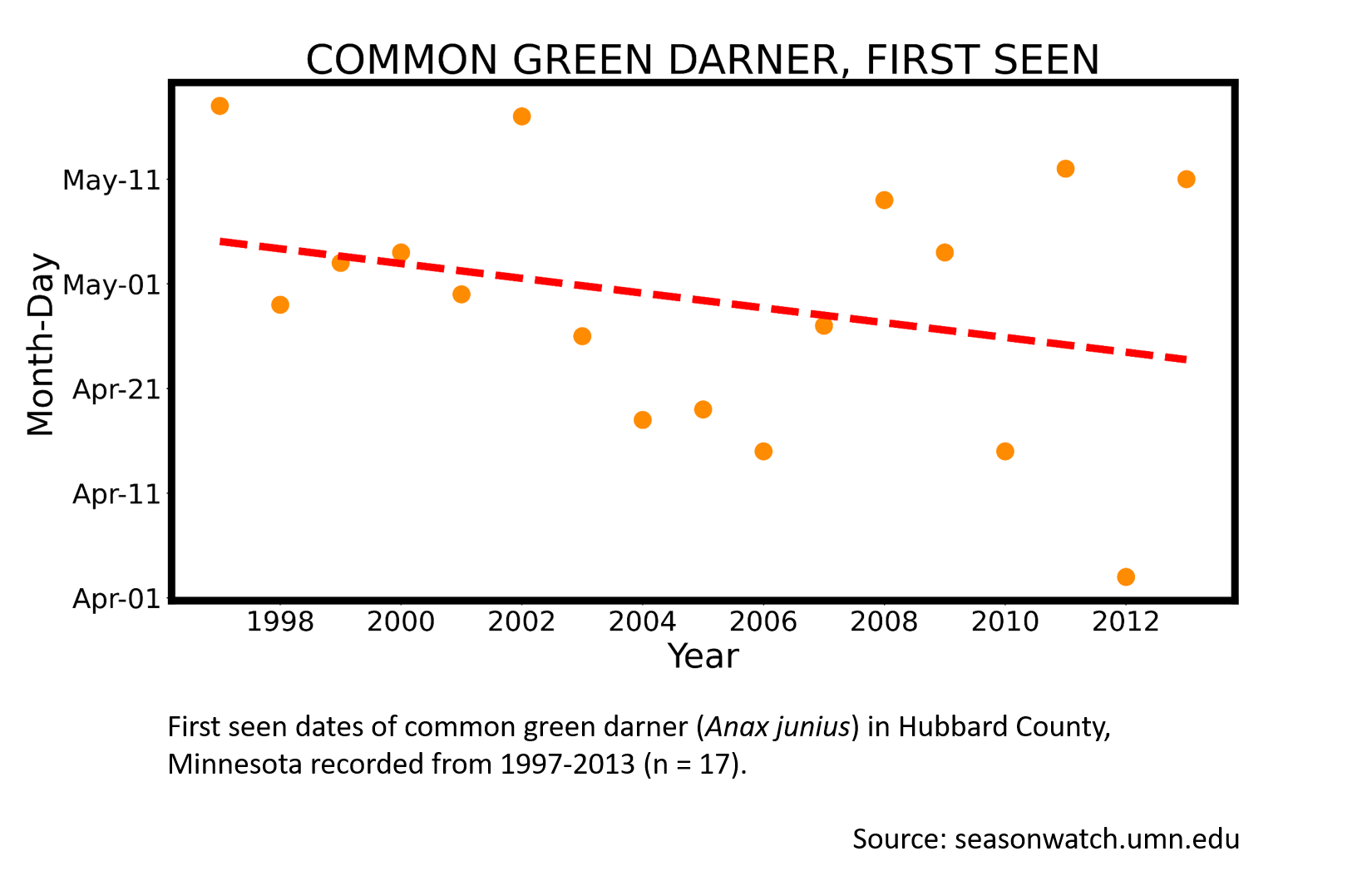
Last seen
- Earliest: August 14 (occurred in 1997)
- Average: September 26
- Latest: October 29 (occurred in 2007)
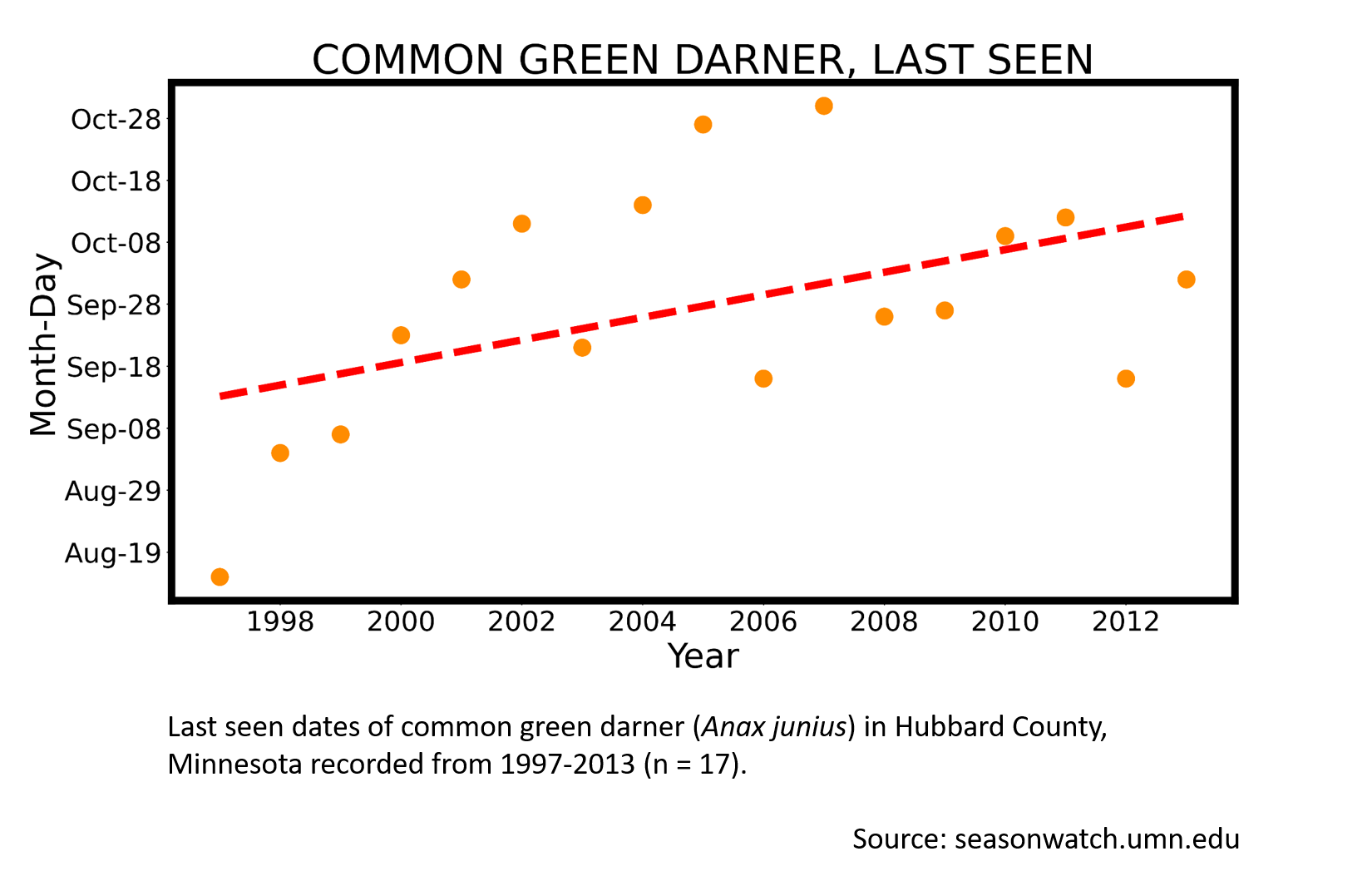
More resources
Keep exploring Season Watch
Keep exploring Season Watch
Co-author: Audrey Negro, Minnesota Master Naturalist
